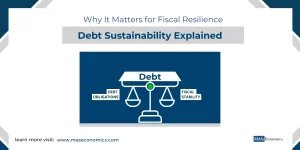The consumption function is one of the core concepts in macroeconomics, as it helps to explain how individuals and households make spending decisions based on their income levels. Consumption, in essence, is the primary component of aggregate demand, and understanding it is crucial for understanding the behavior of an economy as a whole. The concept of the consumption function was initially introduced by John Maynard Keynes in the 1930s, and since then, various theories have been proposed to refine our understanding of consumption behavior.
In this article, we will delve into the different theories that explain consumption behavior, including the Absolute Income Hypothesis, the Relative Income Hypothesis, and the Life-Cycle and Permanent Income Hypotheses. We will also explore the key determinants of consumption and their implications for both households and policymakers.
The Basic Keynesian Consumption Function
The Keynesian consumption function is a straightforward model that relates household consumption to disposable income. It can be expressed as follows:
In this equation, \(C\) represents total consumption, \(C_0\) is the autonomous consumption (the level of consumption that occurs even when disposable income is zero), and \(c\) is the marginal propensity to consume (MPC)—the proportion of additional income that is spent on consumption. \(Y_d\) represents disposable income (after-tax income available to households).
To understand each component of this equation better, let’s discuss them in more detail. Autonomous consumption (\(C_0\)) is the consumption that households undertake even if they have no income. This could be financed through savings or borrowing, and it reflects the idea that people need to consume a basic level of goods, such as food and housing, irrespective of their income. The marginal propensity to consume (MPC), denoted by \(c\), is a key parameter that measures how much of an additional dollar of income is spent on consumption. If the MPC is 0.8, for instance, it means that households spend 80 cents of every extra dollar they earn.
Keynes argued that consumption increases as income rises, but not proportionately—meaning that while richer households will consume more in absolute terms, they will save a higher proportion of their income. This concept forms the foundation of several other consumption theories that emerged over time.
Absolute Income Hypothesis
The Absolute Income Hypothesis was also introduced by Keynes and suggests that consumption is primarily a function of current disposable income. As income increases, consumption also rises, but at a decreasing rate. This means that the marginal propensity to consume falls as income rises—wealthier individuals tend to save more of their additional income compared to low-income individuals.
The consumption function in this hypothesis has the same general form as the Keynesian consumption function, emphasizing the direct relationship between current income and consumption. The key implication of the Absolute Income Hypothesis is that policies aimed at increasing household income, such as tax cuts or stimulus payments, can have a direct impact on increasing aggregate demand and stimulating economic activity.
Relative Income Hypothesis
The Relative Income Hypothesis, developed by economist James Duesenberry, suggests that an individual’s consumption is not only influenced by their absolute level of income but also by their income relative to others. According to this theory, consumption patterns are influenced by social comparisons, and individuals derive utility from their consumption relative to their peers.
In other words, people are concerned with their relative standard of living. For example, if a person earns more than their neighbors, they are likely to feel wealthier and therefore may consume more. Conversely, if they earn less than others around them, they may feel compelled to maintain a similar lifestyle through increased consumption, even if it means borrowing. This concept helps explain why consumption levels can remain high even when incomes fall, as households strive to keep up with social norms.
The Relative Income Hypothesis also implies that consumption is sticky downward—meaning that during economic downturns, consumption does not decrease as much as income, because households try to maintain their previous standard of living. This has important implications for economic policy, suggesting that stimulating income growth across all income levels can help boost overall consumption and reduce inequalities in consumption patterns.
Life-Cycle Hypothesis
The Life-Cycle Hypothesis (LCH), developed by Franco Modigliani and his colleagues, provides a more comprehensive view of consumption by considering the entire lifespan of an individual. According to the Life-Cycle Hypothesis, individuals plan their consumption and savings behavior over their lifetime with the goal of smoothing consumption as much as possible.
In this model, individuals save during their working years when their income is high and dissave (spend their savings) during retirement when their income is lower. The consumption function under the Life-Cycle Hypothesis can be expressed as:
In this equation, \(C\) represents annual consumption, \(W\) stands for initial wealth, \(RY\) represents the total lifetime income (including expected future earnings), and \(T\) represents the remaining years of life. The goal is to allocate resources in a way that allows for a stable level of consumption throughout an individual’s life.
The Life-Cycle Hypothesis provides an important insight into how individuals make decisions about saving and borrowing. For example, young people may borrow to finance education or home purchases, while middle-aged individuals save for retirement, and retirees dissave to maintain their living standards. This theory emphasizes the importance of policies that support income stability over the entire lifespan, such as pension schemes and retirement savings plans.
Permanent Income Hypothesis
The Permanent Income Hypothesis (PIH), introduced by Milton Friedman, takes a different approach by distinguishing between permanent and transitory income. According to this hypothesis, consumption is determined by an individual’s permanent income, which is the average income they expect to earn over the long term, rather than by short-term fluctuations in income.
The consumption function for the Permanent Income Hypothesis can be represented as:
Where \(C\) represents consumption, \(c\) is the marginal propensity to consume out of permanent income, and \(Y_p\) represents permanent income. Transitory income, which represents short-term deviations from the average, has a much smaller impact on consumption because individuals are assumed to smooth their consumption based on expected lifetime resources.
This hypothesis suggests that temporary changes in income, such as one-time bonuses or temporary layoffs, have a limited effect on consumption, as people adjust their savings rather than their consumption. For policymakers, this implies that permanent changes in income, such as tax reforms or long-term employment growth, are more effective in influencing consumption than temporary measures.
The Role of Interest Rates in Consumption Decisions
Interest rates also play an important role in shaping consumption decisions. Lower interest rates reduce the cost of borrowing, making it easier for households to finance large purchases, such as homes or vehicles. In addition, lower interest rates decrease the return on savings, which may incentivize households to spend rather than save. Conversely, higher interest rates can discourage borrowing and increase the return on savings, leading to lower consumption levels.
In the context of the Life-Cycle Hypothesis and Permanent Income Hypothesis, interest rates influence the intertemporal allocation of resources. For example, if interest rates are low, individuals may choose to save less during their working years, as the opportunity cost of spending is reduced. On the other hand, higher interest rates might encourage more savings to ensure sufficient resources during retirement.
Practical Implications for Policymakers
Understanding the different theories of consumption has significant implications for economic policy. During periods of economic slowdown, for example, Keynesian fiscal stimulus measures such as tax cuts or direct transfers can boost disposable income and, therefore, consumption. However, the Permanent Income Hypothesis suggests that if households perceive these measures as temporary, they may save rather than spend the additional income.
Similarly, the Relative Income Hypothesis highlights the importance of addressing income inequality. Policies that support income growth across all segments of society can help ensure that consumption levels remain robust, even during periods of economic uncertainty. Additionally, ensuring access to affordable credit can help households manage their consumption and maintain their living standards, particularly in times of income volatility.
Conclusion
The consumption function and the various theories that explain consumption behavior are fundamental to understanding macroeconomic dynamics. From the Absolute Income Hypothesis to the Relative Income, Life-Cycle, and Permanent Income Hypotheses, each theory provides valuable insights into how individuals and households make decisions about spending and saving.
These theories also have important implications for economic policymakers, particularly when it comes to designing interventions aimed at stimulating aggregate demand, reducing inequality, and ensuring long-term economic stability. By understanding the nuances of consumption behavior, policymakers can craft targeted measures that effectively boost economic growth and improve the well-being of households.
FAQs:
What is the consumption function in economics?
The consumption function represents the relationship between household consumption and disposable income. It shows how much people spend based on their income, with components like autonomous consumption (spending when income is zero) and the marginal propensity to consume (MPC), which measures how much additional income is spent on consumption.
What is the Absolute Income Hypothesis?
The Absolute Income Hypothesis, introduced by Keynes, suggests that consumption depends on current income. As income rises, consumption increases, but at a diminishing rate. Wealthier households save a larger proportion of their income, meaning the MPC decreases with higher income. This theory emphasizes the role of income-based policies like tax cuts to boost consumption.
How does the Relative Income Hypothesis explain consumption?
The Relative Income Hypothesis, developed by James Duesenberry, proposes that people’s consumption behavior is influenced by their income relative to others. Individuals compare their standard of living to their peers, striving to maintain a similar lifestyle. This often leads to stable or sticky consumption patterns, even during income fluctuations, as people try to “keep up” with others.
What is the Life-Cycle Hypothesis?
The Life-Cycle Hypothesis (LCH), proposed by Franco Modigliani, suggests that individuals plan their consumption and savings over their entire lifetime. People save during their working years and use these savings during retirement. The goal is to smooth consumption across different life stages. This theory highlights the importance of retirement savings and policies that promote financial planning throughout life.
What is the Permanent Income Hypothesis?
The Permanent Income Hypothesis (PIH), introduced by Milton Friedman, argues that consumption is based on an individual’s expected long-term income rather than short-term fluctuations. Temporary changes in income have a limited effect on consumption since people tend to save or borrow to maintain stable spending levels. This suggests that permanent income policies have a greater impact on stimulating consumption.
How do interest rates affect consumption?
Interest rates influence borrowing and savings decisions. Lower interest rates encourage borrowing and reduce the incentive to save, increasing consumption. Conversely, higher interest rates discourage borrowing and promote savings, leading to reduced consumption. In Life-Cycle and Permanent Income models, interest rates impact how individuals allocate their savings over time.
What are the policy implications of these consumption theories?
Each consumption theory offers insights for policymakers. The Absolute Income Hypothesis supports tax cuts and fiscal stimulus to boost demand. The Relative Income Hypothesis underscores the importance of addressing income inequality to sustain consumption. The Life-Cycle Hypothesis highlights the need for retirement planning policies, while the Permanent Income Hypothesis emphasizes that only long-term income changes significantly affect consumption behavior.
Why is consumption “sticky” during downturns?
According to the Relative Income Hypothesis, people strive to maintain their lifestyle even during economic downturns, leading to sticky consumption patterns. Households may dip into savings or take on debt to sustain spending levels, which helps stabilize consumption but can also increase financial vulnerability over time.
How do the consumption theories guide economic policy during recessions?
During recessions, policies that increase disposable income, such as stimulus payments or tax cuts, can boost consumption, as suggested by the Absolute Income Hypothesis. However, if households view these measures as temporary, they might save instead of spending, as implied by the Permanent Income Hypothesis. Understanding these dynamics helps policymakers design more effective interventions to stimulate aggregate demand.
Thanks for reading! Share this with friends and spread the knowledge if you found it helpful.
Happy learning with MASEconomics




